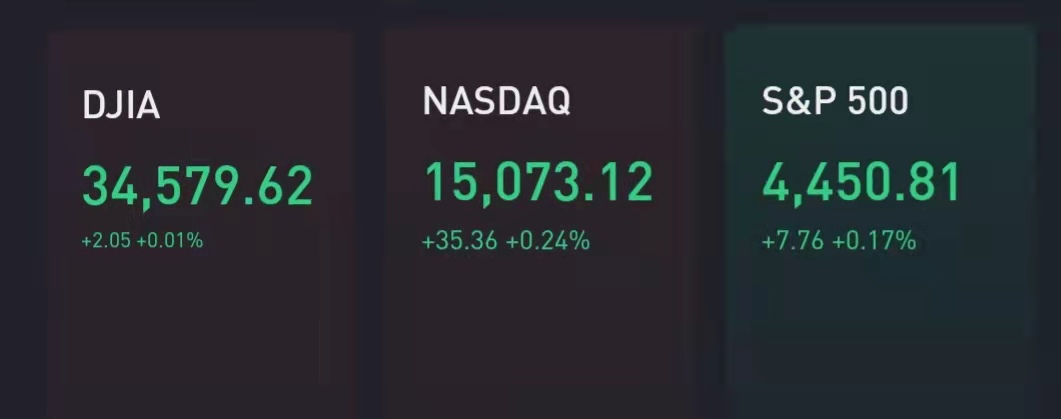The S&P 500 rebounded slightly Wednesday after the stock average closed Tuesday at the lowest level since Aug. 20, the latest in a string of negative trading sessions this September.
The major index traded ticked up 0.2%. The Dow Jones Industrial Average traded near the flatline. The Nasdaq Composite inched 0.2% higher.
Some bullish economic news released before the bell Wednesday helped sooth investor sentiment. The NY Fed's Empire Index, a measure of manufacturing in the region came in at 34.3 for September, way ahead of the 18 consensus estimate from FactSet and an acceleration from August.
Markets have been in a funk so far this month amid rising investor worries about the delta variant derailing the economic recovery, along with hand-wringing over the next action by the Federal Reserve.
Tuesday marked the fifth straight day of losses for the Nasdaq. The Dow, S&P 500 and the small-cap Russell 2000 index have been in the red for six of the last seven days.
"Despite concerns about the recent downshift in economic and business cycle momentum, we remain confident that strong growth lies ahead and activity is bound to re-accelerate," wrote JPMorgan strategist Dubravko Lakos-Bujas, in a note Wednesday. "We remain positive on the equity outlook, and expect S&P 500 to reach 4,700 by end of this year and surpass 5,000 next year on better than expected earnings."
Microsoft shares gained more than 1% in premarket trading after announcing a dividend increase and a sizable $60 billion share repurchase program.
Energy stocks, which have been popular bets among investors banking on a big economic recovery, gained as WTI crude topped $71. Exxon added about 1%.
Apple shares rebounded slightly after the shares fell Tuesday after the unveiling of a new iPhone and other products.
Casino stocks like Las Vegas Sands and Wynn Resorts traded in the red again. Those names took a big hit Tuesday as the government of Macau looks to increase regulatory scrutiny over casinos and Chinese health authorities reported a Covid-19 outbreak.
In regular trading Tuesday, the Dow fell 292.06 points, or 0.8%, to 34,577.57, retreating after it snapped a five-day losing streak on Monday. The S&P 500 lost 0.6% to finish at 4,443.05 and the Nasdaq Composite slipped 0.5% to 15,037.76.
September hashistorically been a down monthfor the markets, which have seen an average decline of 0.56% in the month since 1945, according to CFRA. And after eight months of straight gains, strategists say a major pullback could be imminent.
For September, the Dow is off by more than 2% and the S&P 500 is off 1.8%. The S&P 500 is on track to see its worth monthly performance since October 2020.
The S&P 500 has continued to move higher throughout the year, dipping below the 50-day moving average only once, according to Fundstrat. Mike Wilson, chief investment officer at Morgan Stanley, told CNBC’s “Fast Money” that could be just the beginning.
“The midcycle transition always ends with a correction in the index,” he said of the S&P 500. “Maybe it’ll be this week, maybe a month from now. I don’t think we’ll get done with this year, however, with that 50-day moving average holding up throughout the year because that’s the pattern we typically see in this part of the recovery phase.”
On Tuesday the Labor Department released data before the bell showing a smaller-than-expected rise in U.S. inflation for the month of August. Consumer prices rose 5.3% from a year ago and 0.3% from July. Stripping out food and energy, the consumer price index was up just 0.1% for the month.
Initially, markets rallied but turned back down after the market open as uncertainty about the timing of the Federal Reserve’s tapering of asset purchases settled in.

